Carsten’s Wintergold Mugo Pine – Tree Form
$69.50 Original price was: $69.50.$48.65Current price is: $48.65.
- Free Shipping over $25
- Fast & reliable delivery options
- Enjoy top quality items for less
- Multiple safe payment methods

We are always looking for ways to bring color to your garden in winter, and here we have a really unique way to do it. Most colored evergreens are at their best in spring and summer, with many, although not all, turning greener or bronze in winter. One outstanding tree that doesn’t do that is Carstens’ Golden Mugo Pine. In fact, this remarkable tree is the exact reverse – green in summer, and gold in winter. Considered by all experts to be the very best golden winter pine tree, in 2013 it was selected for the American Conifer Society’s Collectors’ Conifer of the Year Program. There is just one problem. If you live in an area with regular snow in winter, this dwarf, low-growing bush is going to disappear, just when we want to see its beauty most. We found a solution, and we had our expert nursery growers attach stem pieces of this plant onto short, thick trunks of ordinary pines. After skillfully care and growing, we have a gorgeous short tree, with a broad, rounded crown, that keeps all that beauty up in the air where it can be fully appreciated.
Carstens’ Golden Mugo Pine Tree forms a rounded bush, with dense branches and a flattened profile. It grows around 2 inches each year, so that within 10 years it will be about 24 inches across, and 3 feet or so tall, with a crown that is about 12 inches thick. It will continue to grow for its whole life, getting larger, and the trunk will thicken too, so it can support that larger crown. Mugo pines usually produce one set of new shoots each spring, but this variety is unique because it produces a second set of shoots, as a small bunch of stems at the top of each branch in summer. This makes it very dense, full and compact, avoiding the need for the tedious ‘candling’ job often done to keep mugo pines dense and bushy. The needles are about 1 inch long, and slightly twisted, without sharp tips. New needles are bright green, which darkens to a deep, rich green all summer. Then as the colder weather arrives in late fall, they turn a remarkable bright gold – a true yellow, and not a greenish chartreuse.
The dramatic winter color of Carstens’ Golden Mugo Pine Tree, now lifted clear of the snow, is an obvious choice for an area near where you enter the house in winter, perhaps beside a path, or outside a door. Its cheerful brightness will lift your spirits on the worst of winter days, and it looks just as good against the dark earth of a winter bed as it does against a background of snow. It’s a great addition to a collection of colorful dwarf evergreens, planted among rocks perhaps, with a gravel mulch over the bed. An obvious choice for an Asian-style garden too, it adds a refined touch of winter color to the tranquility you have created. Grow a pair of these trees in containers on either side of a door, or plant it among low-growing shrubs for height and as a colorful winter accent. A very collectible plant, this rare connoisseur’s selection is also very easy to grow and very handsome indeed.
Carstens’ Golden Mugo Pine Tree should be planted in a bright, sunny spot for the best color development. It thrives in cold zones, even in zone 2, but it grows just as well in all but zones 8 and 9, which are too hot for it. One of the easiest pines to grow, it will thrive in almost any well-drained soil. Avoid low-lying areas and heavy, wet soil. If you do have wetter ground, plant on a slope or raised area, so that water will not hang around the roots for long. Pests and diseases are normally not serious or common, and with its unique production of bushy summer shoots, it needs no trimming. This easily-grown plant is very low-maintenance, and resistant to ordinary summer drought, once established.
This tree is a special form of the mugo pine, Pinus mugo. This tree is very variable in its natural environment, which is the mountains all through central Europe, especially in Switzerland and Austria. There it can be a tree as much as 18 feet tall, but it is more normally a shrubby plant of different sizes. Small, compact forms have been selected for many years to grow in gardens, and its cold-hardiness is a result of growing in those high mountains. Edwin Carstens lived in the town of Varel, in northern Germany. He grew some seeds of mugo pine, and one winter he spotted a unique gold plant among the seedlings. He worked with Hachmann Nursery, in the nearby town of Barmstedt. They grew more by grafting, and first released them in 1988. This plant is different from the variety ‘Winter Gold’, which is very inferior, with just a few gold needles in winter, while ‘Carstens’ is solid gold and very superior.
Our growers take stem pieces traceable back to Carstens’ original plant and attach them to a trunk from a pine seedling. This is how these amazing miniature trees are made, and the demand for them is always huge. Order now, as great plants like this don’t just grow on trees, and they will soon be gone.
Be the first to review “Carsten’s Wintergold Mugo Pine – Tree Form” Cancel reply
Related products
Cedar Trees
Evergreen Trees
Cypress Trees
Cypress Trees
Arborvitae Trees
Evergreen Trees
Cedar Trees
Cypress Trees

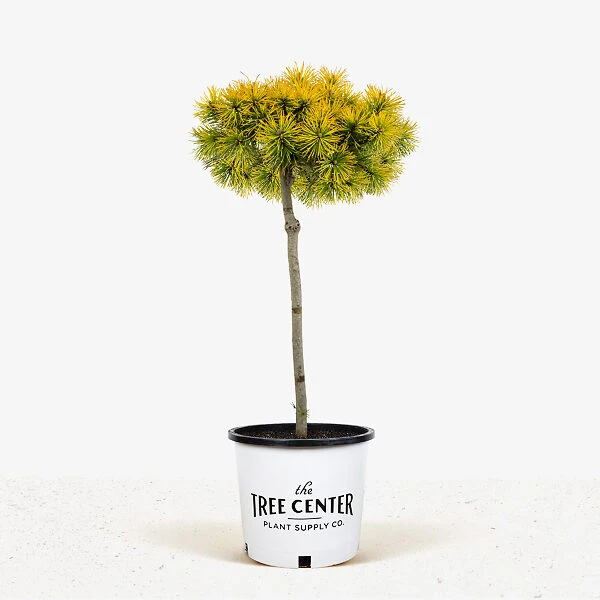


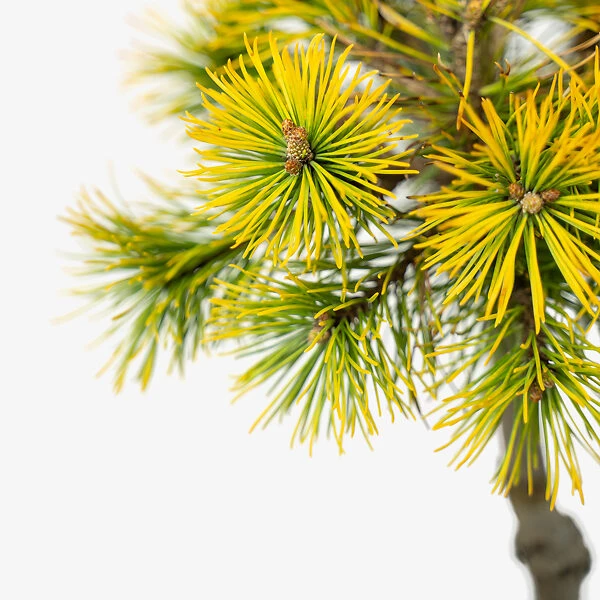


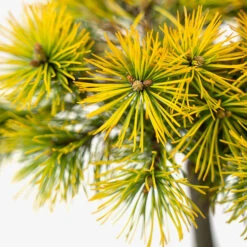
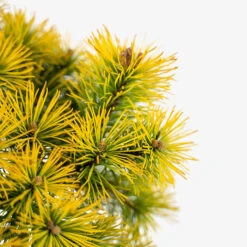
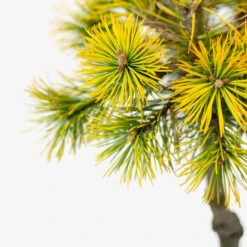
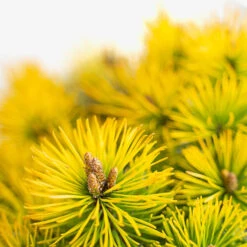
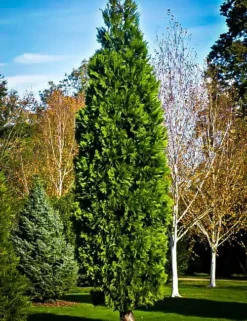
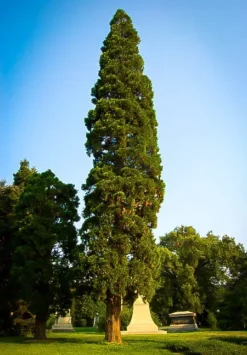
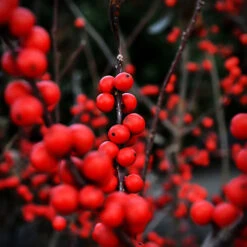













Reviews
There are no reviews yet.